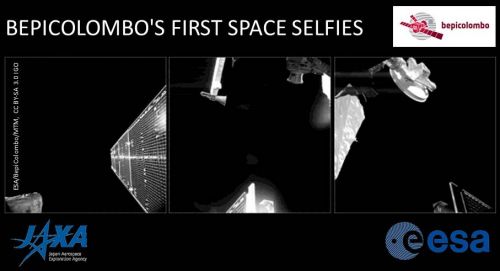
25/10/2018
SENER: on the way to Mercury!
SENER: on the way to Mercury!
BepiColombo module, composed of two satellites developed by the European Space Agency and its Japanese counterpart, respectively, took off from Kourou (French Guiana) on last October 19 to initiate its journey towards Mercury, a planet little explored and still very mysterious.
In this project, the SENER group companies with Catalan headquarters in the Barcelona Synchrotron Park are responsible for the low-gain antennas, the medium-gain antenna and the waveguides for routing the signal and the pointing mechanism for the high-gain antenna. These units are responsible for staying in contact with the Earth at all times by transmitting the satellite's telemetry and receiving its telecommands, as well as sending all the scientific data. SENER also manufactured the magnetometer boom, which separates the instruments from the satellite's magnetic influence. All these instruments are thus a critical element to the success of the mission.
BepiColombo launch is just the beginning of a 7-year very long trip (8.5 billion kilometers): Although Mercury, the nearest planet from the Sun, is relatively closed (the shortest Earth-Mercury distance is 80 million kilometers), the giant mass of the Sun does not allow a straight trip: if so, BepiColombo could not be decelerated and would inexorably fall into our star.
The technological challenge imposed by the proximity of the Sun is huge. For instance, some materials will have to resist to both extremely low (-170ºC) and high (450ºC) temperatures.
When BepiColombo arrives close to Mercury in December 2025, both scientific modules (MPO for Europe and Mio from Japan) will split up and begin their respective mission on two different orbits around the planet. MPO (11 instruments) will investigate the surface and the composition of Mercury and Mio (5 instruments) will focus on the environment (magnetosphere, atmosphere, dust, solar wind).
To follow the mission: here
Have a nice trip! See you there!
In this project, the SENER group companies with Catalan headquarters in the Barcelona Synchrotron Park are responsible for the low-gain antennas, the medium-gain antenna and the waveguides for routing the signal and the pointing mechanism for the high-gain antenna. These units are responsible for staying in contact with the Earth at all times by transmitting the satellite's telemetry and receiving its telecommands, as well as sending all the scientific data. SENER also manufactured the magnetometer boom, which separates the instruments from the satellite's magnetic influence. All these instruments are thus a critical element to the success of the mission.
BepiColombo launch is just the beginning of a 7-year very long trip (8.5 billion kilometers): Although Mercury, the nearest planet from the Sun, is relatively closed (the shortest Earth-Mercury distance is 80 million kilometers), the giant mass of the Sun does not allow a straight trip: if so, BepiColombo could not be decelerated and would inexorably fall into our star.
The technological challenge imposed by the proximity of the Sun is huge. For instance, some materials will have to resist to both extremely low (-170ºC) and high (450ºC) temperatures.
When BepiColombo arrives close to Mercury in December 2025, both scientific modules (MPO for Europe and Mio from Japan) will split up and begin their respective mission on two different orbits around the planet. MPO (11 instruments) will investigate the surface and the composition of Mercury and Mio (5 instruments) will focus on the environment (magnetosphere, atmosphere, dust, solar wind).
To follow the mission: here
Have a nice trip! See you there!
More news
29/09/2016
Barcelona, a Friendly Ecosystem for Start-Ups
22/09/2016
Barcelona, capital of particle accelerators science and technology
15/09/2016
Tech Companies With More Than $1 Million Raised: Barcelona Ranks 5th In Europe
09/09/2016
UB and UAB Universities Stand out in Spain According to Main International Rankings
31/08/2016
New CaixaBank's Data Center Implementation Completed In Barcelona Synchrotron Park
25/08/2016
Barcelona, 4th most creative city in the world









